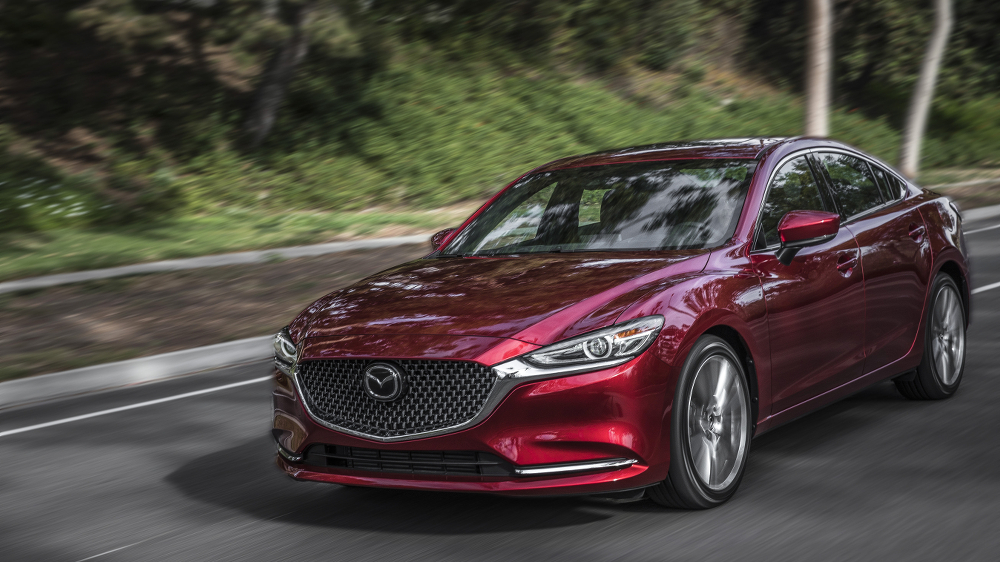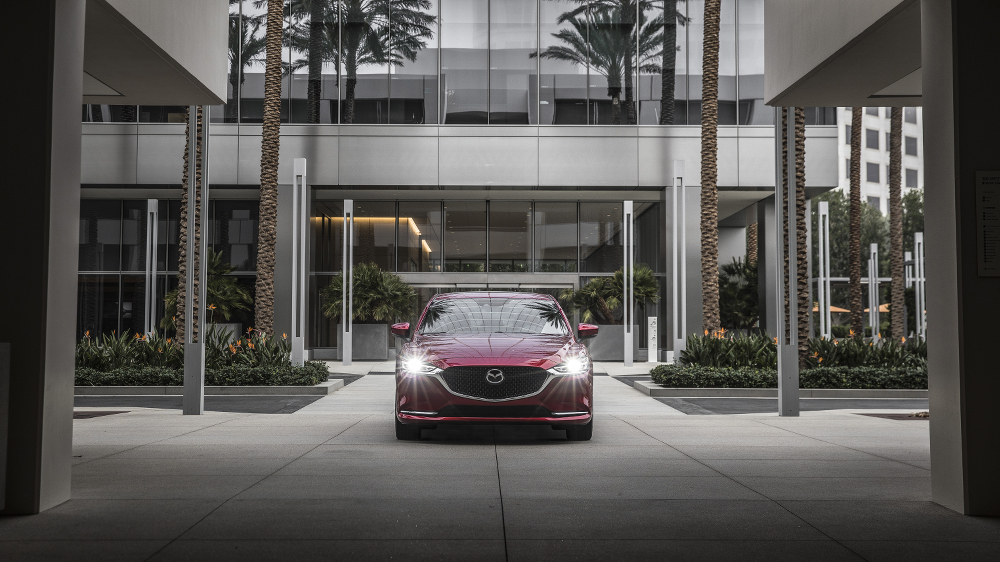The Mazda 6 has a heads-up display that will rock your world
Driver and car in harmony

Not all heads-up displays are created equal. On the 2018 Mazda 6 2.5T, what you see in the display that seems to hover above the hood (it’s actually just a projection onto the windshield) is full of extra details. You can watch your speed, of course. Yet, it’s the 'extras' that make it unique and interesting, and help you focus more on the road.
Active Driving Display is one of the best HUDs around, and it’s a sign of how car companies will show you more relevant driving info in the near future.
Symbiotic relationship
Mazda calls this concept of cocooning the driver and minimizing distractions the 'Jinba Ittai' (or a symbiotic relationship between a horse and rider). The HUD helps because you can keep your eyes facing forward, never looking down to check your speed or fumble with the radio.
“Mazda’s human-centered engineering process is focused on supporting the driver -- and the in-vehicle technology is designed to minimize visual, cognitive, and manual distractions,” says Matthew Valbuena, Mazda’s human-machine interface and infotainment engineer.
“From the beginning, the content provided with the Active Driving Display was always focused on the driver’s most important task- the act of driving, which is why all of the content is driving related.”

In a recent test, the details that popped up were quite surprising. First off, very few cars (even those from BMW and Mercedes-Benz) use a blindspot warning system in the HUD. As you drive, you can see a small flash in the HUD (it actually looks like a Wi-Fi symbol) on the side of the car where someone else is passing you.
If you approach an intersection where there’s a stop-sign, you will see an icon of a stop-sign appear as a reminder. It actually works. In a few cases, the symbol popped up on a lonely country road. It won’t be too long from now before more cars than just a Tesla Model S or some Volvo models can also come to a complete stop and resume.
Get daily insight, inspiration and deals in your inbox
Sign up for breaking news, reviews, opinion, top tech deals, and more.
Minimizing distraction
Interestingly, Active Driving Display only shows driving info like speed the current speed limit (if you go over the speed limit, a red box appears). It won’t show you an incoming call or info about which song is playing from your smartphone. This is all intentional, says Valbuena.
“We were able to minimize visual distraction by virtually eliminating the glance angle (how far from the roadway the driver has to look to see the information) and focus time (the amount of time required for the human eye to focus between two different distances) with the positioning of the Active Driving Display,” he says.
Additionally, by presenting only driving-related information, Mazda minimized any possibilities for cognitive distraction as all non-driving (entertainment or comfort) information is presented on the [main center displays].”

It doesn’t quite end there, though. After a week of driving, additional details showed up in the HUD. The Mazda 6 can warn you to brake if you don’t respond in time, and a warning appeared in the HUD to help. A lane departure also showed up during one morning commute.
And, in an urban area, one major perk. The HUD showed a Do Not Enter sign on a one-way road, which is surprising in that it helped avoid an obvious mistake.
All of these HUD features were a good match for the specific trim level we tested, the Mazda 6 Signature, which has a 2.5-liter turbocharged engine that’s fast and sporty. The Signature costs $34,750 (about £26,500, AU$47,800) and the HUD is standard on that model.
On The Road is TechRadar's regular look at the futuristic tech in today's hottest cars. John Brandon, a journalist who's been writing about cars for 12 years, puts a new car and its cutting-edge tech through the paces every week. One goal: To find out which new technologies will lead us to fully driverless cars.
John Brandon has covered gadgets and cars for the past 12 years having published over 12,000 articles and tested nearly 8,000 products. He's nothing if not prolific. Before starting his writing career, he led an Information Design practice at a large consumer electronics retailer in the US. His hobbies include deep sea exploration, complaining about the weather, and engineering a vast multiverse conspiracy.
